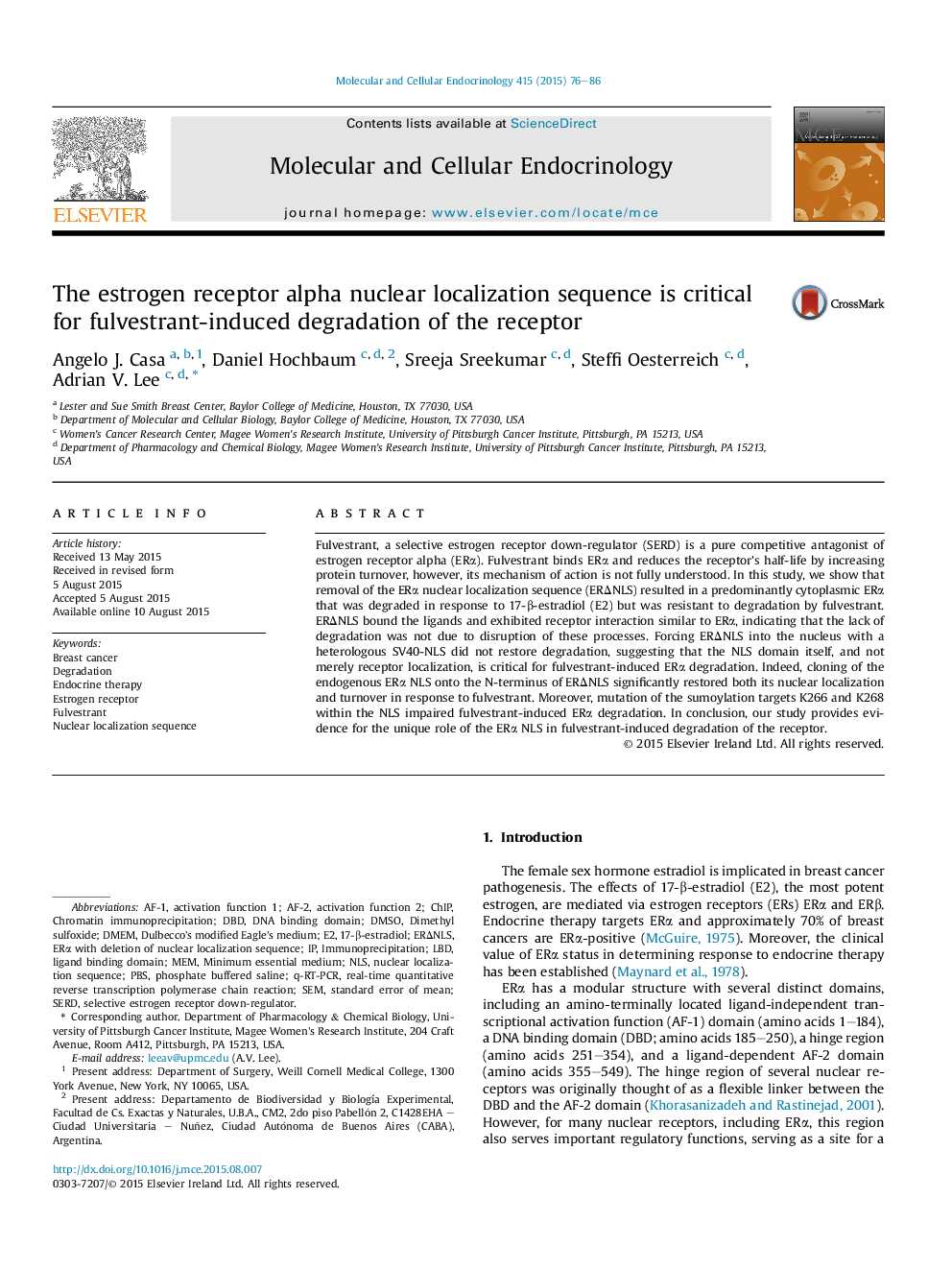| Article ID | Journal | Published Year | Pages | File Type |
|---|---|---|---|---|
| 2195701 | Molecular and Cellular Endocrinology | 2015 | 11 Pages |
•Deletion of ERα NLS domain (ERΔNLS) causes cytoplasmic localization of the receptor.•NLS deletion does not impair ligand binding.•ERΔNLS is degraded by E2 but is resistant to fulvestrant-induced degradation.•NLS, but not merely ERα localization is critical for fulvestrant-induced degradation.
Fulvestrant, a selective estrogen receptor down-regulator (SERD) is a pure competitive antagonist of estrogen receptor alpha (ERα). Fulvestrant binds ERα and reduces the receptor's half-life by increasing protein turnover, however, its mechanism of action is not fully understood. In this study, we show that removal of the ERα nuclear localization sequence (ERΔNLS) resulted in a predominantly cytoplasmic ERα that was degraded in response to 17-β-estradiol (E2) but was resistant to degradation by fulvestrant. ERΔNLS bound the ligands and exhibited receptor interaction similar to ERα, indicating that the lack of degradation was not due to disruption of these processes. Forcing ERΔNLS into the nucleus with a heterologous SV40-NLS did not restore degradation, suggesting that the NLS domain itself, and not merely receptor localization, is critical for fulvestrant-induced ERα degradation. Indeed, cloning of the endogenous ERα NLS onto the N-terminus of ERΔNLS significantly restored both its nuclear localization and turnover in response to fulvestrant. Moreover, mutation of the sumoylation targets K266 and K268 within the NLS impaired fulvestrant-induced ERα degradation. In conclusion, our study provides evidence for the unique role of the ERα NLS in fulvestrant-induced degradation of the receptor.
Graphical abstractFigure optionsDownload full-size imageDownload high-quality image (128 K)Download as PowerPoint slide
